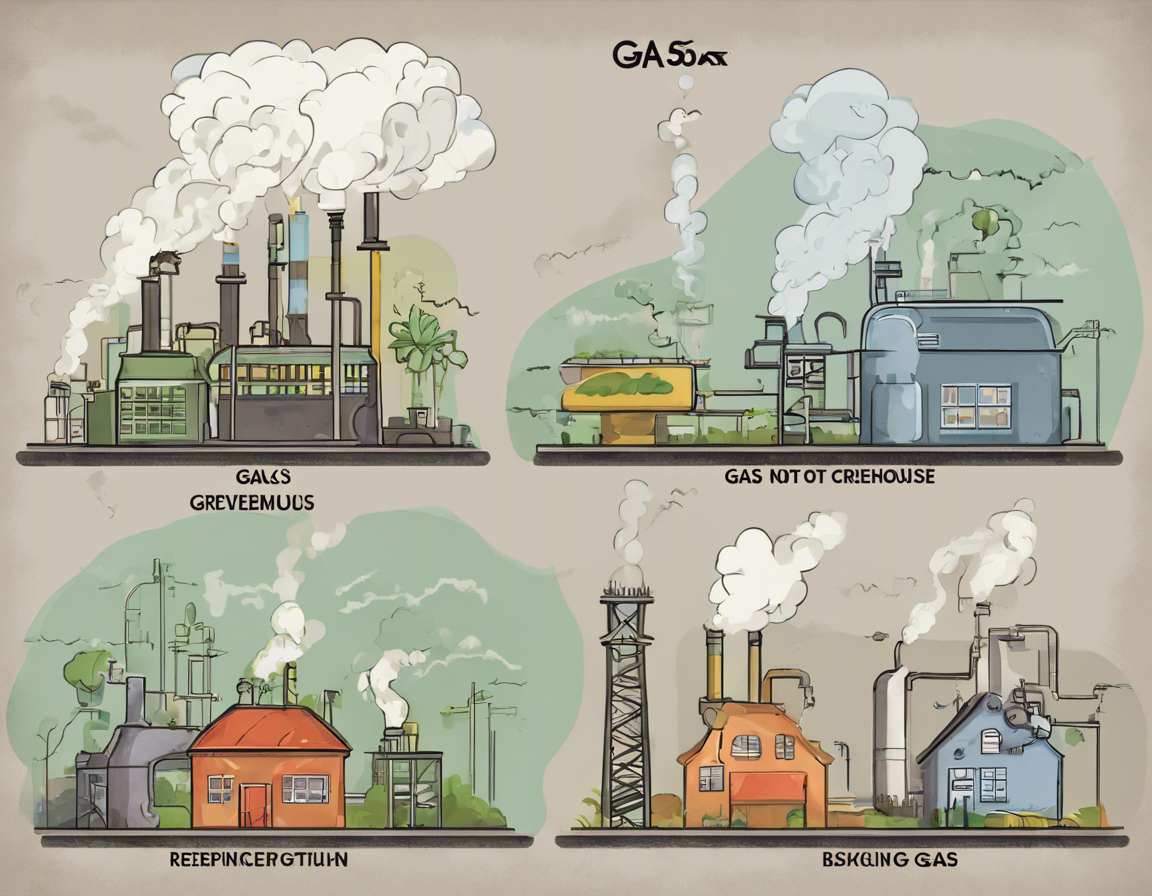Introduction
When it comes to discussions about climate change and global warming, the term “greenhouse gases” is frequently mentioned. These gases are instrumental in trapping heat in the Earth’s atmosphere, which leads to the warming of the planet. However, not all gases fall under this category. In this article, we will delve into the world of greenhouse gases and identify which gas is not a greenhouse gas, as well as explore the significance of each gas in the context of climate change.
Understanding Greenhouse Gases
Greenhouse gases are those gases in the atmosphere that can trap heat. They allow sunlight to enter the Earth’s atmosphere and then prevent some of the resulting heat from escaping back into space. This process is known as the greenhouse effect. The primary greenhouse gases are carbon dioxide (CO2), methane (CH4), nitrous oxide (N2O), and water vapor.
Identifying the Gas That Is Not a Greenhouse Gas
Among the gases present in the atmosphere, oxygen (O2) stands out as the gas that is not a greenhouse gas. Oxygen is a major component of the Earth’s atmosphere, making up approximately 21% of the air we breathe. Unlike greenhouse gases such as carbon dioxide and methane, oxygen does not possess the properties needed to trap heat and contribute to the greenhouse effect.
The Role of Oxygen in the Atmosphere
While oxygen itself may not be a greenhouse gas, it plays a crucial role in supporting life on Earth. Through the process of photosynthesis, plants and phytoplankton utilize sunlight, water, and carbon dioxide to produce oxygen. This oxygen is then released into the atmosphere, where it sustains human, animal, and plant life.
Significance of Greenhouse Gases in Climate Change
-
Carbon Dioxide (CO2): CO2 is the most prevalent greenhouse gas emitted through human activities such as burning fossil fuels, deforestation, and industrial processes. Its high concentrations in the atmosphere are a significant driver of global warming.
-
Methane (CH4): While methane is less abundant than CO2, it is a potent greenhouse gas with a much greater ability to trap heat. Methane is released from sources like livestock digestion, fossil fuel production, and rice paddies.
-
Nitrous Oxide (N2O): N2O is a greenhouse gas that is released through agricultural and industrial activities, as well as through the burning of fossil fuels. It has a much greater impact on global warming per molecule than CO2.
-
Water Vapor: While water vapor is not directly controlled by human activities, its concentration in the atmosphere can be influenced by human-induced climate change. It acts as an amplifier of the greenhouse effect.
FAQs About Greenhouse Gases
- Can greenhouse gases be natural as well as man-made?
-
Yes, greenhouse gases are naturally occurring and essential for regulating the Earth’s temperature. However, human activities have significantly increased the concentrations of these gases in the atmosphere, leading to enhanced global warming.
-
How do greenhouse gases contribute to the greenhouse effect?
-
Greenhouse gases trap heat in the Earth’s atmosphere by absorbing and emitting thermal radiation. This process warms the planet and is necessary for supporting life. However, human-induced increases in greenhouse gas concentrations are intensifying this effect, causing global temperatures to rise.
-
Which greenhouse gas has the greatest impact on global warming?
-
Carbon dioxide (CO2) is the most abundant and significant greenhouse gas responsible for the majority of human-induced global warming.
-
Are there natural processes that can remove greenhouse gases from the atmosphere?
-
Yes, natural processes such as photosynthesis by plants, absorption by oceans, and chemical reactions in the atmosphere act as sinks for greenhouse gases, helping to regulate their concentrations.
-
What are the consequences of increasing greenhouse gas concentrations?
- Rising levels of greenhouse gases lead to an enhanced greenhouse effect, resulting in global warming, climate change, rising sea levels, more frequent extreme weather events, and disruptions to ecosystems and biodiversity.
In conclusion, while oxygen may not be a greenhouse gas, its presence in the atmosphere is vital for supporting life on Earth. Understanding the role of greenhouse gases such as carbon dioxide, methane, nitrous oxide, and water vapor is crucial for addressing the challenges posed by climate change. By reducing emissions and adopting sustainable practices, we can mitigate the impact of greenhouse gases on our planet and create a more sustainable future for generations to come.
